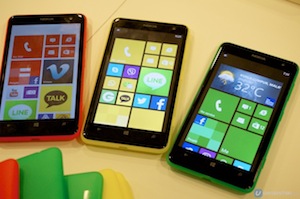 Last week I wrote about the enormous changes that have taken place in 2013. I wrote about how the use of the internet as a primary source of information is now a global truth; how online shopping is no longer a niche behavior and how the lines between physical retail and online are blurred.
Last week I wrote about the enormous changes that have taken place in 2013. I wrote about how the use of the internet as a primary source of information is now a global truth; how online shopping is no longer a niche behavior and how the lines between physical retail and online are blurred.
I explained this has some major implications for consumer goods companies, which, as a result of these changes, can no longer depend on traditional media and traditional retail as key pillars of their marketing strategy. Real competitive advantage is likely to come from bringing shopper marketing and digital marketing into the mainstream. This requires a new blueprint for marketing in the digital age.
What are the key components of the blueprint?
The good news is that just because the world is changing, we don’t have to ‘unlearn’ everything we already know – tomorrow’s blueprint is based on the foundations of over 100 years of marketing best practice. There are four central pillars on the new blueprint that might enable marketers to build on competence they already have.
Define the true target consumer and the behavior that you want from them – The consumer is still king, or queen in the new world. The only way your brand will grow is by attracting new consumers to it and encouraging consumers to use your brand more often and in greater quantity. What has changed is that there is no longer one ‘target consumer’ cast in generic, catch-all terms.
The true target consumer is the person you can identify as being someone whose behavior your communication can influence.
Future brands will have more than one target consumer: there’s the person who doesn’t use your brand but could and should; there’s the person who should be using your brand but is using someone else’s brand; there’s the light user who could be using heavily and the infrequent consumer who could be using your brand habitually and there’s the consumer who so loves your brand that retaining her loyalty is essential. ALL of these consumers deliver value and all of these deserve specific, targeted messages to change or reinforce their behavior. The new blueprint will lay out how behavioral research and consumer segmentation will adapt to cope with the more rigorous demands of the new world.
Convert potential consumers into shoppers – The traditional marketing model assumes consideration will lead automatically to trial and re-use for a proportion of the market. The new blueprint for marketing in the digital age will not leave this to chance – too much is at stake! Tiered, targeted messaging strategies will be needed to guide target consumers towards a purchase. An inherent assumption of these strategies will be that in order to build trust and strengthen engagement, it will not be the volume of impressions that is important, instead it will be the quality and resonance of impressions. The new blueprint will lay out how consumer goods marketers transition from mass communicators to micro-marketers and how to create coherent links between the consumer and the shopper.
Convert shoppers into buyers – Shopper marketers know that, in-store, even highly loyal targets can be swayed by a plethora of messages and offers. The new marketing blueprint will demand that much less is left to chance. Having earned the permission to ask for a sale, marketers will seek to convert the sale with the minimum possible disruption. This may mean that new routes to market such as direct sale and subscription become as prevalent in the future as physical retail is today. The new blueprint will lay out how to define the optimum path to securing the sale and the most effective environment in which to do this.
Evaluate and refine in real-time – Today’s marketing model is evaluated weeks if not months after its execution (if indeed at all). The new blueprint will anticipate the potential for immediate evaluation, defining clearer metrics and enabling sales and marketing teams to respond to outcomes in real-time.
Whilst many marketers may conceptually ‘get’ what needs to happen to execute a new blueprint for marketing in the digital age, the reality is that many organizations lack the infrastructure and will to adopt the types of changes that might be needed today. Most will be challenged with the key question, “what should we do now?â€
What action is needed now?
There are four actions that are urgently needed to stay ahead of the competitive curve in the coming year:
- Take this seriously – Changes in the way we learn about and buy products have profound effects on the way they are marketed and sold. If these issues are not a topic of board conversation today, they should be. The next five years will be critical to the future of many consumer goods businesses large and small. The very worst consequence of putting too much focus on this now is that your company will be miles ahead of its competitors in the space. By contrast, the cost of being left behind might be catastrophic.
- Identify a working group – Large consumer goods companies change slowly and they change by example not by edict. Start the process from a small base of highly competent cross-functional managers working on a specific brand (or brands) in a selected geography and allow them to share their experiences, successes and failures widely across the organization
- Understand the opportunity – Before asking the team to make any changes, develop a program of research that is designed to clearly measure the opportunity. Target the research on establishing the potential value accrued from changing different segments’ consumption and purchase behavior via new media and new routes to market and ensure that the business case for changing investment strategies is clear.
- Try, evaluate and revise – Enable failure. The first executions will inevitably be flawed, allow the working group sufficient time to try a strategy, evaluate it and revise it until they begin to deliver results. Then ensure they document their working process and support its roll out.
2014 is set to be an exciting year, and one in which change will accelerate. I’d be delighted to share our thinking on how you might construct a blueprint for change. If you’d like to discuss this, please feel free to contact me.
 When the dust settles on the breathless wash-up of retail sales over the holiday season in the US and Europe, we will be left with one major learning: the way people shop has changed. But when we look back at 2013 in years to come, we may well conclude that this year stands as the point in history when the entire process on consumer goods marketing changed forever.
When the dust settles on the breathless wash-up of retail sales over the holiday season in the US and Europe, we will be left with one major learning: the way people shop has changed. But when we look back at 2013 in years to come, we may well conclude that this year stands as the point in history when the entire process on consumer goods marketing changed forever. So Microsoft is to buy Nokia’s phone division for $7.2 billion. Most commentators are pretty neutral on this and Microsoft’s stock is even down on the day. I’m guessing a lot of people are thinking that departing CEO Steve Ballmer’s swansong (
So Microsoft is to buy Nokia’s phone division for $7.2 billion. Most commentators are pretty neutral on this and Microsoft’s stock is even down on the day. I’m guessing a lot of people are thinking that departing CEO Steve Ballmer’s swansong (